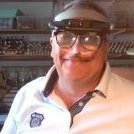Playing in the Sandbox Group Build Sept 1, 2024 - Jn 1, 2025
"Very nice sandy beach ... but the sea is really far !". French Aeronavale (Navy) Potez 25 TOE. 1934 "Pink Cruise"
-
Recently Browsing 0 members
- No registered users viewing this page.


Recommended Posts
Create an account or sign in to comment
You need to be a member in order to leave a comment
Create an account
Sign up for a new account in our community. It's easy!
Register a new accountSign in
Already have an account? Sign in here.
Sign In Now